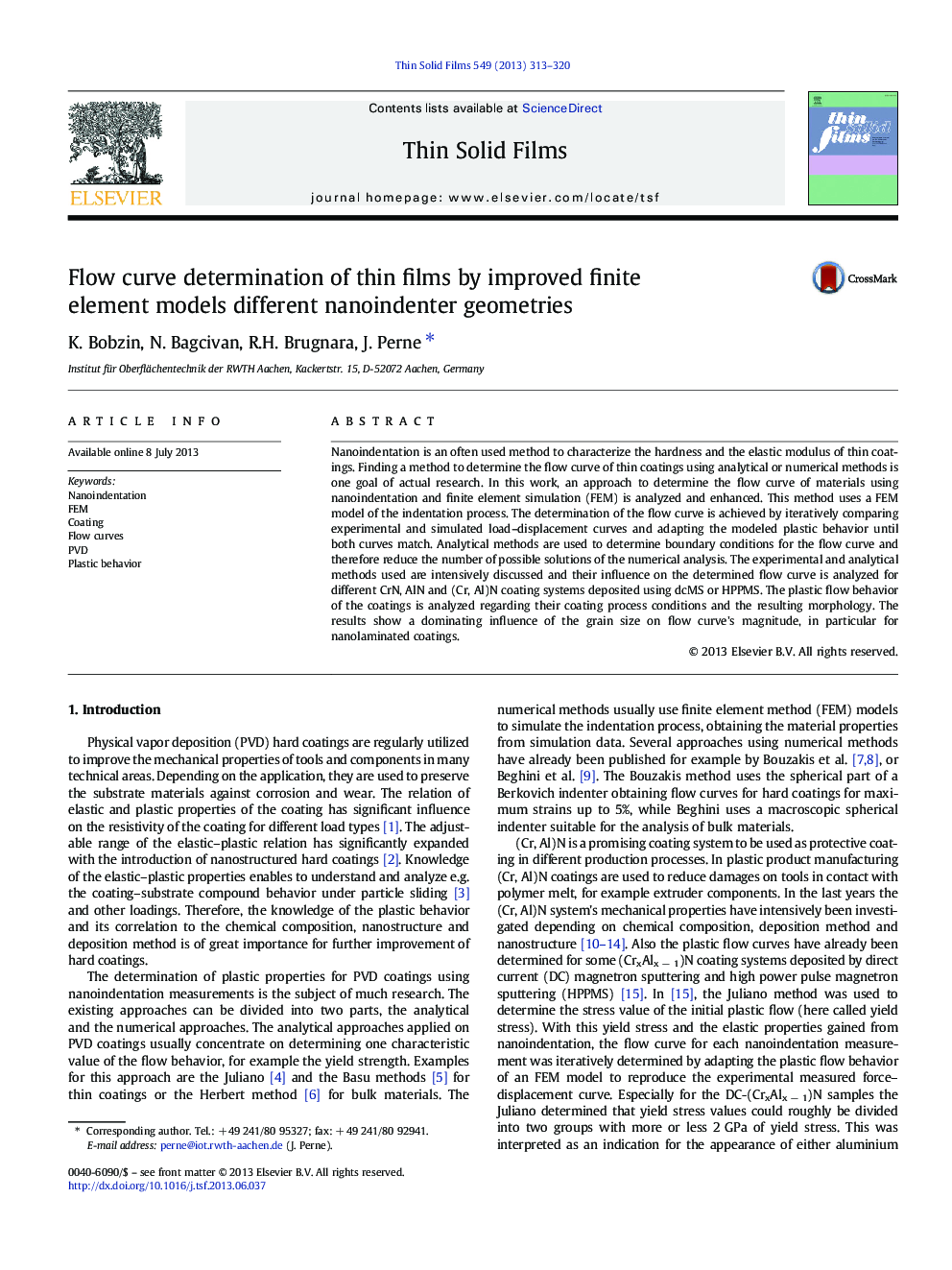| Article ID | Journal | Published Year | Pages | File Type |
|---|---|---|---|---|
| 1665767 | Thin Solid Films | 2013 | 8 Pages |
•Flow curves of (Cr, Al)N coatings have been determined.•Flow curves show high dependence of deposition process and nanostructure.•Flow curve determination method has been analyzed.•High influence of indentation data standard deviation on method's accuracy•Choice of substrate material important for flow curve determination accuracy
Nanoindentation is an often used method to characterize the hardness and the elastic modulus of thin coatings. Finding a method to determine the flow curve of thin coatings using analytical or numerical methods is one goal of actual research. In this work, an approach to determine the flow curve of materials using nanoindentation and finite element simulation (FEM) is analyzed and enhanced. This method uses a FEM model of the indentation process. The determination of the flow curve is achieved by iteratively comparing experimental and simulated load–displacement curves and adapting the modeled plastic behavior until both curves match. Analytical methods are used to determine boundary conditions for the flow curve and therefore reduce the number of possible solutions of the numerical analysis. The experimental and analytical methods used are intensively discussed and their influence on the determined flow curve is analyzed for different CrN, AlN and (Cr, Al)N coating systems deposited using dcMS or HPPMS. The plastic flow behavior of the coatings is analyzed regarding their coating process conditions and the resulting morphology. The results show a dominating influence of the grain size on flow curve's magnitude, in particular for nanolaminated coatings.
